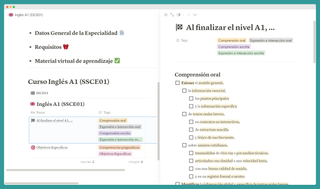Situated Cognition Theory
ESL Business English Applications
Key Takeaway for Business English
Instead of focusing solely on isolated grammar drills and vocabulary lists, Situated Cognition emphasizes active learning within realistic business contexts. This approach promotes deeper understanding, improves communication skills, and prepares learners for real-world challenges.
| Situated Cognition Theory Characteristic | Application to Business English |
|---|---|
| Knowledge is embedded in context | Design lessons around realistic business scenarios relevant to the learners' specific industry, company, and roles. Utilize authentic materials like reports, contracts, emails, and case studies. |
| Learning is social and collaborative | Conduct interactive activities like role-plays, simulations, and group discussions focused on real-world communication tasks. Encourage peer feedback and collaborative learning. |
| Focus on authentic tasks | Include tasks like writing proposals, negotiating contracts, delivering presentations, and participating in meetings, using the target language. |
| Learning is iterative and ongoing | Design a progressive program that builds on acquired skills and allows for practice and reinforcement throughout the course. Encourage self-reflection and goal setting for sustained learning. |
| Assessment is integrated and performance-based | Evaluate learners based on their ability to effectively communicate in authentic tasks, considering both language accuracy and content understanding. |
Additional Notes
- What happens outside the classroom is crucial: Encourage learners to actively practice their English outside of the program by applying their learnings to their daily work tasks and interactions with colleagues.
- Flexibility is key: Adapt the program based on learner needs, industry trends, and company-specific goals.
- Technology can be a valuable tool: Leverage technology to create interactive learning experiences, access authentic materials, and facilitate collaboration.
By applying Situated Cognition principles, Business English programs can become more effective and engaging, ultimately leading to improved communication skills and business success.
Situated Cognition Theory: History
While the roots of Situated Cognition can be traced back to earlier fields like anthropology and philosophy, its formal emergence occurred in the late 20th century. Here are some key figures and milestones.
- 1970s: Jean Lave's research on apprenticeship in tailoring and communities of practice laid the groundwork for the theory.
- 1989: John Seely Brown, Allan Collins, and Paul Duguid published "Situated Cognition and the Culture of Learning," further solidifying the concept.
- 1991: Jean Lave and Etienne Wenger's "Situated Learning: Legitimate Peripheral Participation" popularized the term "situated learning" and explored its application in educational settings.
Situated Cognition Theory: Proponents
- Jean Lave: Anthropologist who studied learning in social contexts, particularly apprenticeship.
- Etienne Wenger: Social theorist who researched communities of practice and situated learning.
- John Seely Brown: Cognitive scientist and educational researcher who emphasized the situated nature of learning.
- Allan Collins: Cognitive scientist and educational researcher who focused on designing technology for learning.
- David Kirsh: Philosopher of mind and cognitive science who explored the role of artifacts and tools in situated cognition.
Situated Cognition Theory Additional Notes
- Situated Cognition is an ongoing field of research with various interpretations and applications.
- It is often linked to other learning theories like social constructivism and activity theory.
- The impact of Situated Cognition can be seen in various educational practices, including problem-based learning, collaborative learning, and authentic assessment.




